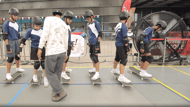Building a cohesive society by supporting our artists & athletes to bring people together
by Circle Stories, on March 7, 2021
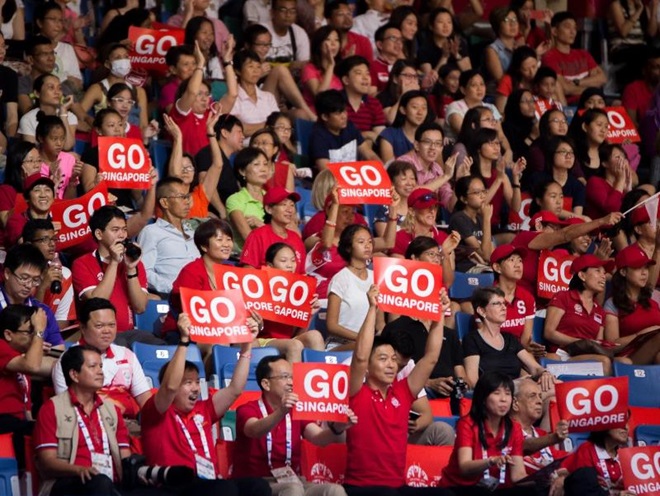
Introduction
- Thank you Mr Chairman, and I thank members that have spoken. I will address some cuts here and my colleagues from the Ministry will take the others.
- Sir, making Singapore a place we can proudly call home is at the heart of what we do at MCCY.
- We can achieve this, through the collective action of everyone:
(a) united, cohesive, resilient;
(b) forging forward together, as Ms Joan Pereira has suggested. - She and Ms Tin Pei Ling asked about MCCY’s strategies to ensure that our society comes together in the face of uncertainty. When we look back at history, one day, I am sure that our collective responses to the COVID-19 pandemic will be seen as a defining moment of our country’s history. Where we go from here, the paths we choose to take – will define us. And our values and character will shine through in the choices we make. And I am moved by how our communities have stepped forward and supported one another. Ms Tin shared some anecdotal stories and I’m sure many of us in this House will have our own stories. To cite one example, the Inter-Racial and Religious Confidence Circles worked with the Singapore Malay Chamber of Commerce and Industry to distribute more than 18,000 Hari Raya cookies to 16 community isolation facilities for migrant workers. Our community leaders have rallied behind our national vaccination programme, with senior religious leaders supporting the programme.
- This is the spirit of Singapore Together! All hands on deck, partnering one another, and the Government to build a better Singapore. In February 2021, we published the Singapore Together Emerging Stronger Conversations (ESCs) report. It took stock of about 17,000 reflections and aspirations for us to emerge stronger. Conversations are good. But they must also lead to action, and tangible outcomes. We therefore initiated the Singapore Together Alliances for Action (AfAs). The AfAs are action-oriented cross-sector collaborations, tackling complex issues which confront our society. This includes economic growth opportunities; youth mental well-being, which is a growing important issue; and lower-wage-workers. MCCY will set up two SG Together AfAs, bringing the total to 18.
(a) The first will be on emerging needs and volunteerism.
i. This will focus on supporting mental wellness, helping seniors adapt to the new normal, and facilitating in-kind contributions.
(b) The second is on corporate purpose.
i. This partners corporates to develop a national framework on corporate purpose and measuring impact, to guide them in doing well by doing good.
(c) My colleague MOS Alvin will share more details of these Alliances. - At MCCY, our scope is wide - arts, heritage, youth, sports and community relations. But at its core, it is about nurturing a more caring people, cohesive society and confident nation, and building ties that bind us not only to one another, but to the place that we call home, giving a sense of place and purpose, anchored in Singapore.
- I talked about our Singapore Tapestry last year. We will continue to weave our diverse threads together, and ensure that this tapestry remains strong and cohesive.
Building a cohesive society by supporting our artists and athletes to bring people together
- Ms Joan Pereira and Ms Cheng Li Hui asked about our efforts to foster greater social cohesion and mixing among youths. MCCY provides opportunities for Singaporeans of diverse backgrounds to interact.
(a) First, we encourage students to meet through arts and sports. The National Arts Council (NAC) and SportSG have been partnering MOE on the Strategic Partnership Co-Curricular Activity (SP-CCA) pilot since 2019. Through this, students not only participate in CCAs based outside of their schools, but they get a chance to do so with other students from other schools, mixing with students from a different background coming from a diverse range of schools. We will be reviewing this pilot to expand the programme. Furthermore, SportSG’s Academies and Clubs have programmes for youths across 17 sports, where students can play with their peers from different schools. Participation in this programme has been encouraging. We started with 15,000 in 2016 and grew to 90,000 in 2019.
(b) Second, we regularly engage our youths through volunteering activities and leadership development programmes organised by the National Youth Council (NYC), where students practise teamwork and collaboration.
(c) Third, we build mutual understanding through shared experiences. NAC’s WeCare Arts Fund and NHB’s HeritageCares support Social Service Agencies to help beneficiaries access arts and heritage programmes alongside their fellow Singaporeans. - In addition, our artists and athletes are key to helping us progress as a cohesive society.
- Mr Xie Yao Quan asked about our plans to sustain interest in sports, arts and culture and how MCCY will help artists and athletes embrace the new normal. Several other members raised the point as well. DPM Heng announced during the budget speech that the Arts and Culture Resilience Package (ACRP) and Sport Resilience Package (SRP) will be enhanced. I will share now more details on these measures.
- Let me start first with the arts and culture sector. Ms Sylvia Lim and Ms Janet Ang spoke about how critical the arts are.
(a) As we mature and develop as a society, our arts, our culture and our heritage will only become a more essential, and a greater and more integral part of us. They not only uplift spirits and give expression to our shared heritage, they help us enhance our sense of belonging, binding us together.
(b) We must continue to develop the sector, by nurturing our artistic talents, providing them with opportunities, spaces and resources to incubate, experiment, innovate and collaborate with one another. This will facilitate creative art-making and presentation, while ensuring that this also benefits the wider arts community, and all Singaporeans.
(c) We invested significantly in growing capabilities and audiences through the 2012 Arts & Culture Strategic Review, and Our SG Arts and Heritage Plans launched in 2018.
(d) We also supported arts organisations to deliver a vibrant arts calendar of over 9,000 activities in 2019. That year in 2019, we saw record high attendance of 15.6M at arts and culture events, and a record high visitorship of 9.6M to museums and heritage institutions. - However, the pandemic has had a profound impact on the sector. A sector that thrives on presence, not only onstage, but in the audience.
- Ms Sylvia Lim talked about the survival of our arts groups and asked about our plans to support our artists.
- While live performances resumed safely in Phase 3, the return of capacity audiences will take some time. This has to be balanced against the need to keep Singapore and Singaporeans safe. This, however, has put pressure on arts organisations and artists to cover operating costs.
- We will therefore do what we can to safeguard livelihoods and retain capabilities in this sector. A further $20M in support measures will be provided to enhance the Arts and Culture Resilience Package. This comes on top of the $55M introduced in April last year, and which saw the roll out of the ACRP Operating Grant in October last year. Let me say more about these details.
- First, we will extend the ACRP operating grant and venue hire subsidy. This will help our arts organisations and artists defray operating costs, which is usually a substantial portion of the costs they have to meet each month.
- Second, we will introduce new measures to address some specific concerns. Last December, NAC organised two ESCs involving arts organisations and self-employed practitioners. The key themes that were brought up include:
(a) Rethinking arts business and monetisation models and how they modernise as well;
(b) Growing digital capabilities; and
(c) Also how do they collaborate between themselves within the sector. - We have taken on board these comments, and will introduce a new SEP Grant – Self Employed Person Grant. This will enhance support for SEPs and gig workers, as Ms Ang had asked, across the sector to collaborate on projects with one another, or indeed with other arts organisations. This will help to build capabilities and create work opportunities for SEPs. Sir, we recognise that freelancing, or self-employment, adds spontaneity and innovation, to the sector. It helps us to uplift the arts ecosystem, and allows there to be a mix and match kind of approach, and this Grant is aimed at preserving that.
- Whilst we focus on these matters, we also must have a clear eye on what a post pandemic arts ecosystem should look like. To this end, we will introduce a new Business Transformation Fund. This will support the transformation of arts and culture organisations, as well as support their recovery and sustainability in the post-pandemic situation.
- We want to do this collaboratively, because we are stepping into a new normal, one that may last for some time. Hence, NAC will engage stakeholders to gather views on these new schemes, and so that we can refine them where necessary, before they are launched in a few months by June 2021.
- In addition, we will continue to help the sector build capabilities that will see them through in the longer term.
(a) NAC will continue to provide training grants to our cultural practitioners. These include ongoing schemes like the Capability Development Grant (CDG), which have supported artists since 2012.
(b) MCCY also supports MOE’s initiative to form an alliance between LASALLE and NAFA. The new arts university will further develop the creative capacity of our youths. It facilitates learning and networking opportunities across creative disciplines, and provides industry-relevant training. - Sir, we also take a long-term view towards encouraging cultural philanthropy in partnership with the private and people sectors.
(a) We established the Cultural Matching Fund (CMF) in 2013, to provide a dollar-for-dollar matching of private cash donations to arts and heritage charities.
(b) The CMF has indeed been well-received. Over 100 charities have benefitted from it between 2014 and 2019, with close to $265 million matched.
(c) This growth in cultural philanthropy has been sustained with the top-up of the CMF in 2017 and we wish to keep up this spirit of giving.
(d) And indeed, this is the one fund that when I sit down and discuss the budget with DPM, I didn’t mind telling him was depleted – because it tells us we have built up an active culture of arts patronage and philanthropy. We will review the CMF with MOF, with a view towards an additional top-up of the fund in 2022. - MOS Low will share more about MCCY’s plans to support our arts and heritage sectors to innovate and also deliver programmes in this new normal.
- Let me turn the focus now to the sports sector, which plays an equally important role in our social fabric. In 2012, SportSG launched Vision 2030 as a roadmap to empower Singaporeans to Live Better Through Sport. This was reviewed in 2019, leading to the launch of Vision 2030 – recharged – where we renewed focus on tailoring programmes for various segments of the population. Over the years, we built new sports centres under the Sports Facilities Master Plan and also rejuvenated existing ones. I hope you have been using them. In 2017, we launched Active Health as a social movement to encourage Singaporeans to take ownership of their own health and wellness. Last year, we launched the ActiveSG Circle as a virtual sports centre to continue engaging the public with online classes to get active. This was something we could do in person physically prior to the pandemic, but we’ve moved online. At MCCY, we recognise the power of sports in bringing Singaporeans together, and we will continue to build on these efforts.
- Many of our sports businesses and SEPs have also been affected by the pandemic. In 2020, we provided our coaches and fitness instructors with jobs and training opportunities. As at December 2020, SportSG has put together over 400 training courses with a capacity for 8,500 coaches and instructors. In addition, more than 500 temporary jobs have been created through the #SGUnited jobs.
- On top of the $50M Sports Resilience Package (SRP) announced last October, we will provide a further $25M to enhance the SRP.
- How will we do so? First, we will introduce a new SEP Project Grant. Like the SEP Grant under the ACRP, this grant supports sports SEPs to collaborate with one another and other organisations, to develop projects that enhance the health and wellness of Singaporeans. We recognise the important role which sports freelancers, self-employed persons play – and we want to support you in this endeavour. This grant has three objectives:
(a) Create more work opportunities for sports SEPs and freelancers.
(b) Support capability development through the planning and execution of projects.
(c) Support the resumption of sporting and community activities, as far as possible. - Second, we will expand the Enterprise Innovation and Capability Development Grant. Last year, we piloted this at $3M for the sports industry to build stronger digital capabilities, develop innovative solutions and look at how we can upskill. These initiatives are not just reactions to the pandemic – they equip our sporting industry with tools to thrive in the future. So, we will provide another $22.5M to boost these initiatives.
- Third, we will extend grants to provide continued support for both businesses as well as individuals. For sports companies, we will extend the Operating Grant till December 2021. This complements the Jobs Support Scheme which offers wage support for sport operators. For individuals, we will extend the Training Allowance Grant and Structured Mentorship Programme till March 2022.
- My colleague Parl Sec Eric will share more details about our plans to support our sports sectors.
- All of these measures will help the sectors adapt to the new normal, at least help them financially. But, if you ask any artist or athlete, they will tell you: their true lifeblood is to perform before an appreciative audience and a vocal and supportive spectatorship. These sectors have much to offer. There is something for everyone - whether it is keeping active through online fitness classes, cheering our athletes on, or enjoying a live performance. I urge all of you to support our artists, athletes and instructors.
Inspiring confidence and pride among Singaporeans as we forge ahead in sports and safeguard our heritage
- Despite the pandemic, 2021 is shaping up to be an exciting year for the sporting fraternity, as sports activities have progressively resumed. With the recent move to allow group activities of up to 8 persons, community-based teams can now take on a 4 vs 4 format.
- Furthermore, we are starting to host international events. Last month, we successfully hosted the Singapore Tennis Open, an ATP 250 event. Over 50 players from more than 15 countries competed, with up to 250 spectators per day allowed in the semi-finals and finals matches. We showed the world that Singapore can resume international sports events safely. Looking ahead, we can prepare for the return of more marquee sporting events, such as the Rugby 7s in October.
- Mr Mark Chay, Mr Sitoh Yih Pin and Mr Xie Yao Quan asked about our plans to prepare our athletes for the upcoming games whilst at the same time ensuring their safety.
- This year, our athletes can look forward to major games – such as the Olympics, Paralympics, SEA Games, and ASEAN Para Games. We are supporting our athletes’ training, while keeping an eye on the global pandemic situation. This includes facilitating safe travel for athletes to participate in overseas competitions to qualify for the games, to train, and to hone their competitive edge as they prepare to peak at these sporting events. The Singapore Sport Institute and National Youth Sports Institute specialists are working with our athletes as they resume full training intensity. Let me emphasise that safety will remain our utmost priority. As more international qualification competition dates are released, we will schedule athletes, coaches and officials to be vaccinated progressively.
- Mr Sitoh Yih Pin and Mr Xie Yao Quan asked about our efforts to provide a safe and positive environment within our sports ecosystem. This is a very important issue for us – no sportsperson, male or female, should feel unsafe as they train, compete or play any role in sports. We also need to address emerging trends such as cyberbullying and online harassment.
- Therefore, a Safe Sport Programme will be established through the Safe Sport Commission. The Programme will be grounded on 3 actions – Prevent, Address and Assure.
- First, to prevent inappropriate behaviour, a Unified Code will be developed to provide the sporting community with a shared reference point against inappropriate behaviour. We have started consultations on the code with non-government organisations. Over the next six months, there will be more engagements with athletes, coaches, parents and sport leaders, among others, to refine the Code so that we can achieve a set of standards that will engender confidence in sport participation.
- Second, to address incidents, a confidential third-party reporting channel and enhanced case management will offer affected individuals access to reporting channels and support.
- Third, to assure participants, the Safe Sport Commission will introduce an accreditation framework. The criteria will be based on the adoption of the Unified Code, implementation of relevant policies, and training of persons involved. Sport organisations that meet the criteria will be accredited through a Safe Sport Mark. This will help sport participants to easily identify sporting organisations that are committed to practising Safe Sport.
- The Safe Sport Programme also contributes to the ongoing Conversations on Singapore Women’s Development, although not all sport participants are women. We want to facilitate an enabling sporting environment that protects women and girls. This is also an example of the government’s approach to addressing women’s development in partnership with stakeholders.
- In sports, apart from providing a positive environment and framework for our sporting community, we must also have bold ambitions.
- Mr Sitoh Yih Pin and Mr Mark Chay asked about our plans to uplift Singapore’s football. Football is a sport with mass appeal. It is the most participated team sport in Singapore, bringing together Singaporeans from all walks of life. A national team that can perform at the highest level affirms Singapore’s multiple pathways of success, and is a source of national pride. It can also expand opportunities for all – to play, to coach, or just to be that crazy football fan, cheering our team on. Our football is not quite where we would like it to be. We can do more, and we can do better, to bring back the Kallang Roar, and give our young Lions every opportunity to pursue their dreams.
- Mr Chay asked what steps can be taken. Let me outline some quick thoughts on this. First, we will have to grow the base of participation. Young talent must be nurtured, we have to encourage more to play, and give structure to the development of young talent. Our young players spend a lot of their time in school, so what we do with schools will be important. We are working with MOE to have a nationwide adoption of a national football curriculum. We will build football academies working with schools, with clear pathways for progression. We must have good coaches and a common system of play with enhanced training infrastructure, wrapped around a football academy for those with the best potential, so they can train, compete and at the same time continue with their studies. Importantly, we must look at how a student can continue to train at the highest levels while still continuing to gain a first-class education. We will consider scholarships for the best young talents so they can have access to a high quality training environment, whether here or overseas, whilst pursuing their studies. We must also focus on matters off the pitch, areas like fitness, nutrition, discipline and a player’s mental fortitude – all of them are factors which are equally important to success.
- But there is one more ingredient for success – and that is our collective will and collective unity to pursue a shared goal. It has to be all of us, working together, united, pulling in the same direction, for this project to have chance. Uplifting Singapore football is a national project, and I encourage all of us to rally around our common goal.
- We will continue to do our best to build a sustainable and resilient football ecosystem which Singaporeans can be proud of.
- Parl Sec Eric will share more about these initiatives later on.
- Another area of pride and confidence for Singaporeans is our cultural heritage. Our cultural landscape is a rich fusion of traditions, rituals and crafts. These are also inextricably bound to each of us, and to our own national identity. We must continue to commemorate and pass it on to future generations. We will redouble our efforts to safeguard both our intangible and tangible heritage, and celebrate cultural icons like our Cultural Medallion recipients who have contributed so richly to our nation’s development.
- Mr Darryl David talked about celebrating our hawker culture. Last December, our hawker culture was inscribed on the UNESCO Representative List of the Intangible Cultural Heritage of Humanity. I thank everyone for your overwhelming support. Indeed, we are very proud of our hawkers.
- MCCY and NHB remain committed to promoting our hawker culture.
(a) First, for the Singapore Heritage Festival 2021, we can look forward to a digital exhibition of poetic and graphical interpretations of our hawker culture.
(b) Second, content related to hawker centre landmarks will be displayed online, and at selected MRT stations, as part of the “Ride & Discover” exhibition.
(c) Third, we will continue to showcase our hawker culture through festivals, exhibitions and programmes at our museums, using grants from NHB and taking on board ideas and suggestions Mr David has sketched out. - 2021 marks the 50th anniversary of the promulgation of the Preservation of Monuments Act.
- The preservation of national monuments is important to safeguard our heritage. Our heritage encompasses not only the intangible ones, like hawker culture, but also our heritage buildings. These structures have withstood the test of time and embody our nation’s heritage.
- We regularly restore our National Monuments, and will carry out a series of restoration projects in the coming years to ensure that they continue to stand strong. Completed restorations include the Abdul Gafoor Mosque, Sultan Mosque, and St James Power Station.
- Moving ahead, one major project will be restoration of the Istana main building, built between 1867 and 1869. The Istana and Sri Temasek were collectively gazetted as a National Monument in 1992. They have borne witness to many historical milestones, including our transition to a sovereign state. Restoration works for the Istana will commence in 2023 while other sites like the former Istana Kampong Gelam will commence in 2022. We will commemorate the Golden Jubilee of our National Monuments with an exhibition in June 2021. This exhibition will showcase the preservation journey of all 73 National Monuments for the first time.
- We will also be commemorating the 25th anniversary of the Museum Roundtable, with a year-long celebration. This includes mystery museum tours to explore lesser known museums, a travelling exhibition, and complementary museum programmes.
- MOS Low will share more details on these plans.
Fostering a more caring society by partnering and supporting our youths and corporates
- As we strive to build a cohesive and confident nation, it is vital for Singaporeans to continue to care for one another, and to contribute to a better Singapore for all.
- A key focus of MCCY is our youths. Last September, I spoke about how youths of today will be our leaders of tomorrow. I know that our young people, especially fresh graduates, worry that this crisis will have a lasting impact on their careers. We understand these concerns and will do our best to help you overcome them. MOS Alvin will share more about MCCY’s efforts to provide opportunities and other pathways for these young people to overcome these challenges and to emerge stronger.
- Ms Hany Soh and Ms Joan Pereira asked how the government will encourage more people to care. That’s a very important topic. When the pandemic hit, our youths stepped up to help those in need. Youth Corps Singapore adjusted its volunteering activities to meet community needs. For instance, they partnered IMDA to equip seniors with digital literacy skills, which are very much needed during the digital era and in this pandemic, via the Digital Learning Circles.
- Youth Corps will continue these good efforts. About 1,400 youths will be engaged through the Youth Corps Leaders Programme and Programme X in 2021. These youths will develop the skills to implement projects to address specific societal needs. Furthermore, Youth Corps will offer about 4,000 volunteering opportunities for youths. These include online and subsequently physical programmes for persons with disabilities as well.
- The responsibility for building a caring society must involve every Singaporean.
- And so, on that score, we plan for every town in Singapore to have a coordinating node that brings community groups and resources together. In 2018, SG Cares Volunteer Centres (VCs) were initiated to achieve this. VCs are based in the community, ground-up, chosen to develop and deploy volunteers, foster partnerships, and strengthen volunteer management capabilities. Since end-2018, 12 VCs have been appointed and have engaged about 10,000 volunteers. A few weeks ago, DPM, Ms Tin and I witnessed the launch of the VC at Geylang Town, operated by Care Community Services Society. We met with many staff, volunteers and corporate partners of the VC, who are doing a wonderful job mobilising community stakeholders to support the vulnerable.
- Sir, we will continue to expand these efforts. There will be SG Cares Volunteer Centres in all 24 towns by March 2022.
- We also want to partner corporates to care for the community. In 2016, the Business and IPC Partnership Scheme (BIPS) was introduced to encourage corporate volunteerism. Through the scheme, businesses enjoy 250% tax deduction on wages and related expenses when their employees volunteer at IPCs. To encourage corporates to continue caring, DPM Heng announced that BIPS will be extended till 31 December 2023. The National Volunteer & Philanthropy Centre (NVPC) will lead efforts to raise awareness and enhance the adoption of BIPS. NVPC will also introduce a ‘BIPS Clinic’ for interested corporates to tap into this and learn more about the scheme.
Conclusion
- MCCY’s overarching mission is to bring people together, forging community spirit, and intertwining our stories to form a cohesive Singapore Tapestry. That has been the essence and hallmark of everything that we do at MCCY.
- However, for much of 2020, with the pandemic, this was not easy.
- In fact, we had to work on the opposite – keeping people safe meant keeping people apart. Overnight, many of my Ministry’s staff, our partners, stakeholders and many community leaders in the community had to pivot to safe management measures, and play a variety of different roles, to keep Singaporeans safe. All of them went the extra mile in areas well outside their usual comfort zone, to protect the safety of Singaporeans. I thank them very much.
- But we also soon realised that being apart did not break us apart. It did not dampen our spirits, and it did not diminish our desire to keep the threads of our Singapore tapestry strong, cohesive, resilient.
- I am sure that each of us, as I have said earlier, would have heard our own anecdotes of ordinary Singaporeans who did extraordinary things, going the extra mile to help one another through the crisis.
- These are the stories that will define us, when one day, we look back and reflect on the crisis of a generation.
- We will remember that in this crisis, we came out stronger, because we went in together.
- That, Sir, is the unfinished story of the Singapore Tapestry – let us continue to weave these stories together, and indeed, we will be stronger as a nation.
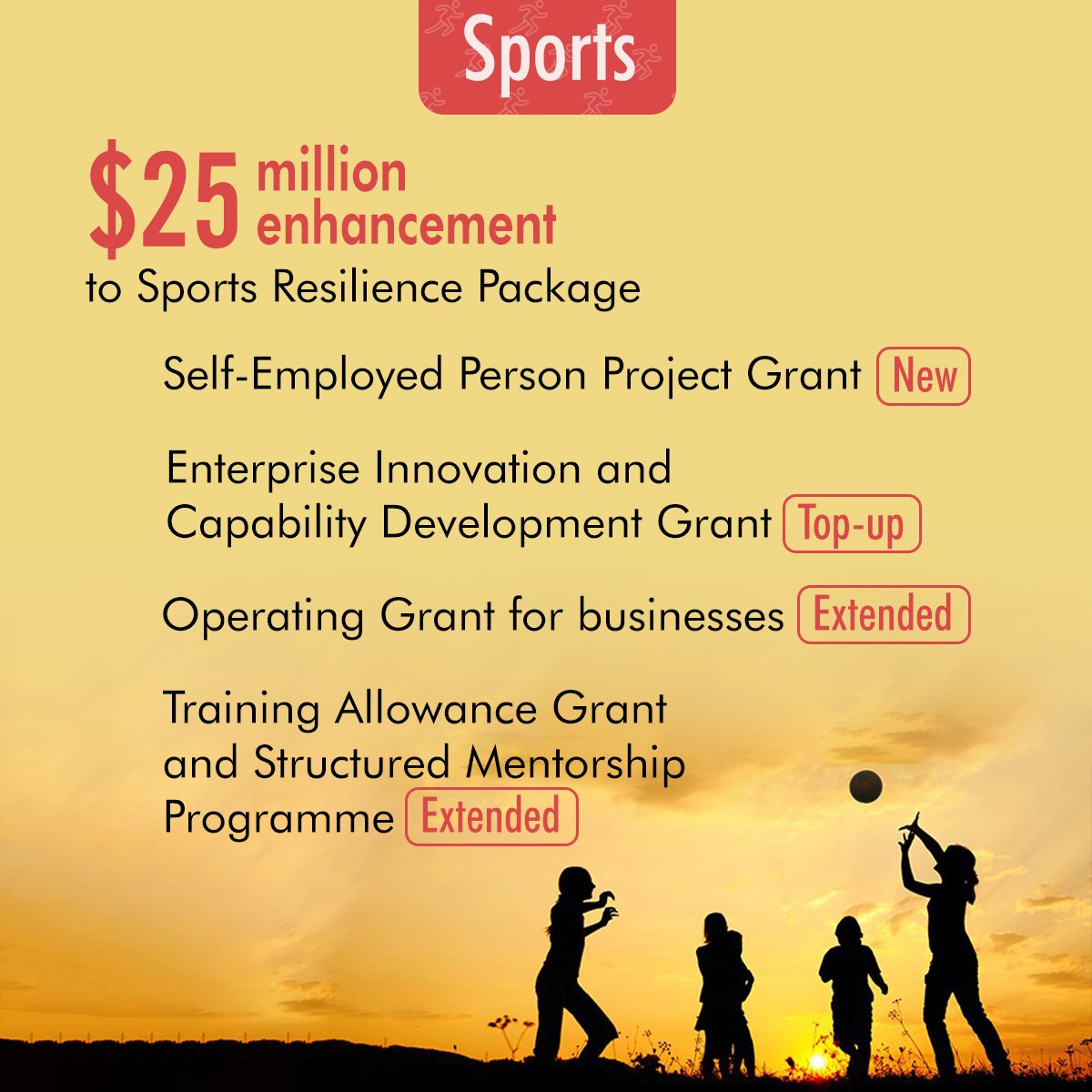
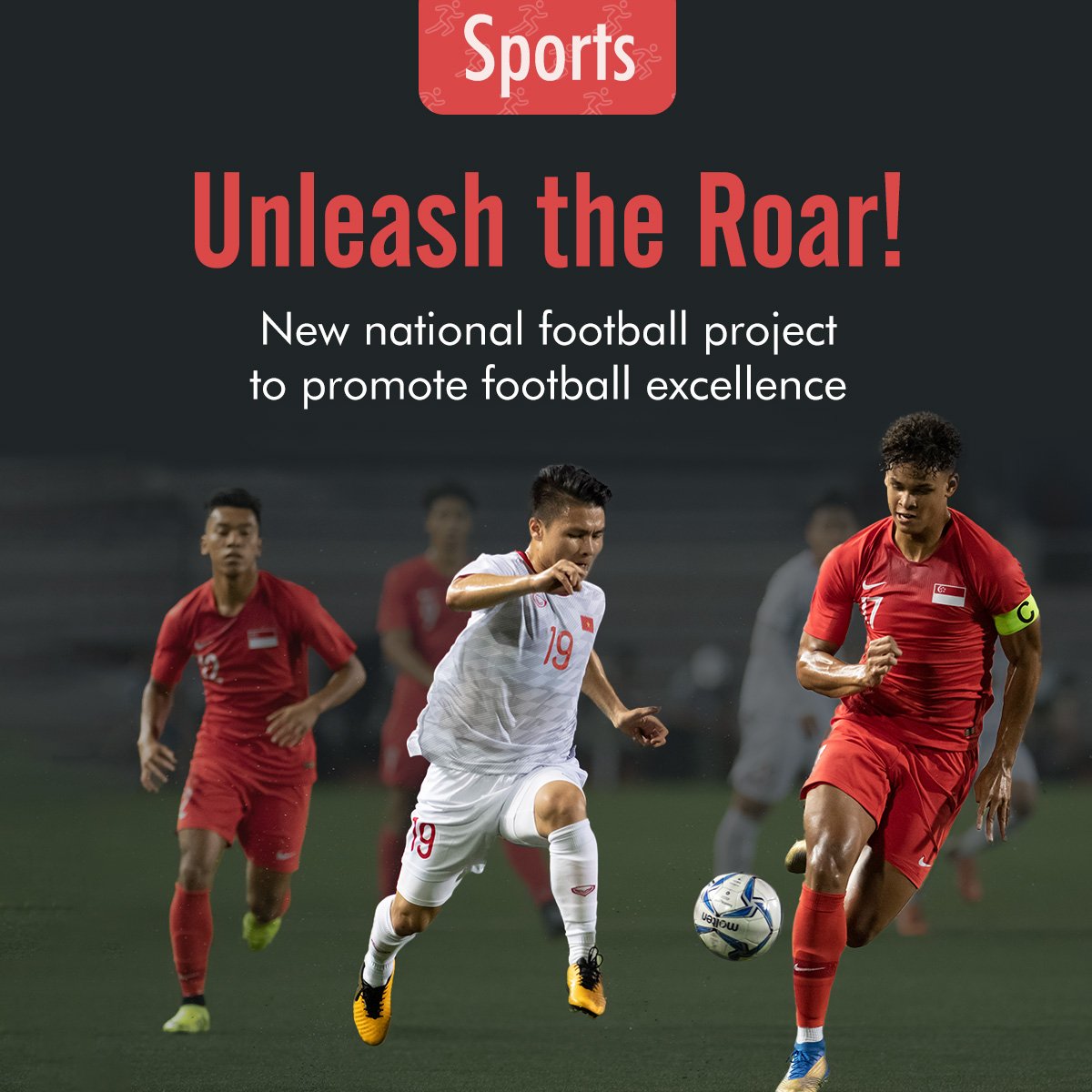
Follow us on Telegram for more news and updates.
Related Articles
Recent Events & Programmes
Related Articles
[BlogPost 164438712123 NSG 2024 Badminton: Senior Div Girls Quarter-Finals, BlogPost 164238055490 Evergreen Aleksandar Duric Still Making Headlines at 53, BlogPost 164170080646 NSG 2024 Rope Skipping: Junior Div Girls Freestyle Team Finals, BlogPost 162884973666 Move and Rest Better With Data From Your Own Body, BlogPost 163393049482 Life Comes Full Circle For Serangoon Garden Secondary School's Fahrish Khan, BlogPost 163258797651 Making Golf a Sport for All, BlogPost 162512222328 NSG 2024 Sepaktakraw: Senior Div Yuhua Primary School vs Qihua Primary School, BlogPost 162233592997 Gritty Lions Suffer Loss to China, BlogPost 162089384371 On Your Mark, Get Ready, Go Running, BlogPost 161670652697 Lions' Excellent Showing Against China, BlogPost 161435270031 Ogura Optimistic for Exciting Clash against China, BlogPost 161127614758 The Future of Basketball in Singapore: Why 3x3 is Here to Stay, BlogPost 161033673012 The Active Lifestyler's Guide to the New ActiveSG Delta Sport Centre, BlogPost 161128356680 Grand New Champions Crowned at WTT Singapore Smash 2024, BlogPost 160844835218 NSG 2024 Table Tennis: C Div Boys Pool Round, BlogPost 160210745115 NSG 2024 Basketball: Senior Div Girls Tampines Primary School vs Frontier Primary School, BlogPost 159881180544 Whirlwind Return to Women's Football, BlogPost 159633541417 Singapore Smash to Elevate a New Legacy, BlogPost 158983580420 NSG 2024 Rugby: B Div Damai Secondary School vs Peirce Secondary School, BlogPost 159003960202 SFA Fiesta: Kicking off 2024 to a Roaring Start, BlogPost 158830735126 NSG 2024 Football: B Div Girls Preliminary Round Meridian Secondary School VS Bowen Secondary School, BlogPost 158536989718 Team Nila Volunteers Recognized At Awards Ceremony, BlogPost 158270107806 NSG 2024 Hockey: B Div Boys Preliminary Round Raffles Institution VS St. Hilda Secondary School, BlogPost 157966862615 NSG 2024 Floorball: B Division Preliminary Rounds Kick Off!, BlogPost 157562433712 What Is Safe Sport?, BlogPost 157559446197 Sengkang Secondary: Cultivating Well-Rounded Footballers, BlogPost 157368261167 New National Training Centre for Cricket at West Coast Ground, BlogPost 155340164987 Active Ageing with Joey Bonifacio, BlogPost 155930815517 Inaugural Singapore Youth League kicks off from 24th February 2024, BlogPost 155340164727 Bukit Canberra : the Coolest Spot in the North, BlogPost 155368905255 How Padang Fandi Inspired Ayden to Chase his Dream, BlogPost 154755572826 Ageing Backwards with Elizabeth Cheang, BlogPost 154094657315 Running For Fitness, BlogPost 153318636178 Excitement Builds for FIBA 3x3 Asia Cup 2024, BlogPost 153198644247 World's Top Four Confirmed for 2024 HSBC Women's World Championship, BlogPost 149413941770 Cultivating Your Kids’ Interest in the Outdoors, BlogPost 149413941163 Making Sport More Appealing for Our Kids, BlogPost 149412549409 Solo Or Team Sport – Choosing the Best for Your Child, BlogPost 151197478798 Former Lions Stalwart Baihakki Khaizan Sheds Light on New Accreditation to Elevate Grassroots Football and Youth Development, BlogPost 80703591291 New Year, Fitter You! Here are the top 3 workouts for the New Year, BlogPost 81171151456 7 Reasons Why Sports are Great for Children’s Mental Health, BlogPost 80542065330 17 Best Yoga Classes & Studios in Singapore [+ Rating & Prices], BlogPost 149404351798 From Brush to Lens: A Student's Journey in the World of Art and Sports Photography, BlogPost 149402825063 The Benefits of Active Parenting, BlogPost 149397832009 Sweden Claim 9th Straight Gold at the Women's World Floorball Championship, BlogPost 149397831449 Lion City Sailors Win 2023 Singapore Cup, BlogPost 148511324266 Pitch Perfect with Jonathan Teo, BlogPost 148511724402 Seniors: Increase your flexibility bit by bit with these stretches, BlogPost 147866574167 A Valuable Experience In Spain for Singapore's National Development Centre U-14 Boys, BlogPost 146915317264 How one magical Kallang night changed the lives of Abirami and Daania forever]





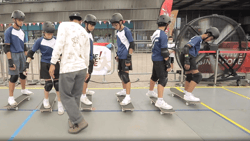


.jpg?width=162&height=60&name=2XURUN2024%20-%20KV%20(1920%20x%20700px).jpg)

